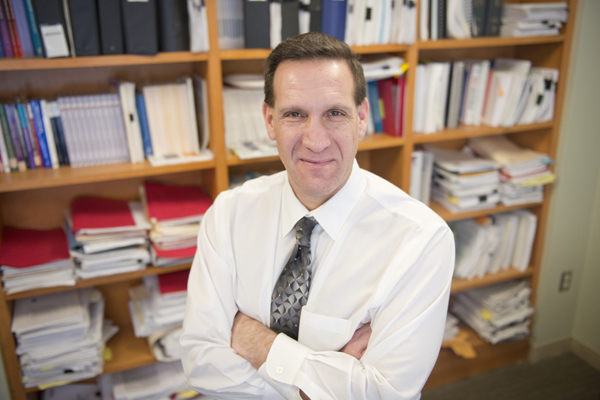What do hospitals do for their communities?

Are hospitals inherently charitable institutions, providing an invaluable service to the community? Or are they instead large corporations making billions of dollars and getting even richer off the tax breaks afforded by their exempt status?
The jury is still out, according to Gary Young, director of the Northeastern University Center for Health Policy and Healthcare Research and professor of strategic management and healthcare systems. But before we can even face this question, he said we first need to look at the data surrounding it.
Young and his colleagues in the D’Amore-McKim School of Business and Bouvé College of Health Sciences carried out a first-of-its-kind study published today in The New England Journal of Medicine that compares the community service practices of hospitals across the nation.
With the passing of Medicare and Medicaid in 1969, the Internal Revenue Service ended a decades-long expectation for hospitals to provide charity care to the extent to which they were financially capable to qualify for tax exemption. Back then, these services usually took the form of charitable care, wherein hospitals would treat everyone that passed through their doors regardless of insurance status. But with Medicare and Medicaid, it was assumed there would be no precedent for charitable care, since everyone would now be insured, Young explained.
Nearly a half-century later, it’s now clearer how that panned out. Not only has 15 percent of the population slipped through the insurance cracks, but community benefit has also taken on many new roles with the shift toward preventive medicine. Additionally, hospitals across the country have come to define “community benefits” on their own terms, because there is no standard definition.
In advance of the Affordable Care Act, the IRS adopted a uniform set of community benefit measures to begin to parse out how hospitals around the country are serving their communities, Young said. A form called Schedule H, an appendix to the standard form required of all tax-exempt institutions (Form 990), is now required by hospitals not for exemption justification, but simply as a data-collection tool.
The first year of reporting on Schedule H was 2009 and now, four years later, Young’s team is the first to look at the story it tells about our nation’s hospitals. “There is tremendous variability,” Young noted. Some hospitals spend less than 1 percent of their operating budget on community benefits as defined by Schedule H, while others spend more than 20 percent.
Young’s team hypothesized that the disparity would correlate with varying community needs in the hospitals’ respective communities, but after analyzing the data, they found nothing of the sort. Communities with the highest percentage of uninsured residents saw only minor increases in the amount of community benefits, including charity care, provided by their local hospitals.
Many argue that Schedule H doesn’t include all forms of community benefit, so it doesn’t provide an accurate picture, Young said. For example, hospitals often provide care to uninsured patients who do not meet their charity care guidelines but ultimately fail to pay their bill issued by the hospital. This is called bad debt and it is not included in the IRS’ set of community benefit measures.
Young did find one correlation, however. Sixteen states have required their hospitals to report more stringently on community benefits practices for several years. These hospitals happen to contribute some of the highest amounts of community benefits in the country. Young warned that this cannot be considered a causal link, but suggested the increased transparency may encourage increased community benefit.
While the new data may raise more questions than it answers, it sheds new light on the role hospitals play in our communities, Young said. And though the debate on the justification for hospital tax exemption will undoubtedly continue, it will now be significantly more well-informed.
Young and his team will present the findings and engage in a public discourse about the topic at the National Health Policy Forum in Washington, D.C. on April 26.





